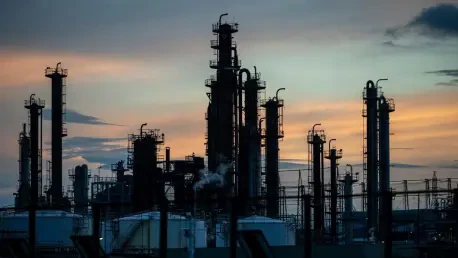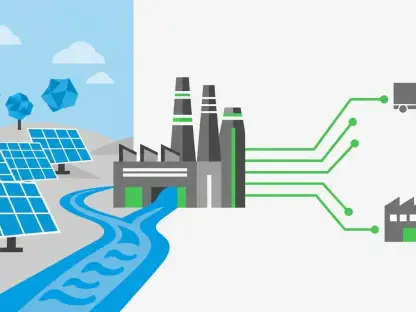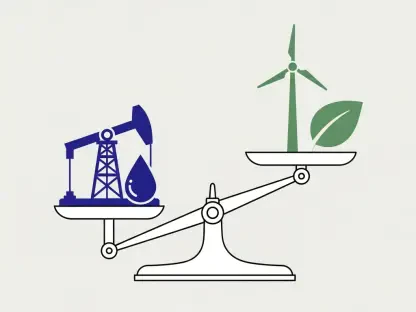Decoding the Resumption: Economic Gains Amid Geopolitical Tensions
In a striking turn of events, Indian state-run refiners have re-entered the Russian crude oil market, securing deliveries for September and October after a brief hiatus earlier this year. This move, driven by compelling discounts of approximately $3 per barrel on the benchmark Urals grade, underscores a pivotal moment for India’s energy strategy. With domestic energy costs impacting inflation and industrial growth, the decision to prioritize economic benefits over geopolitical pressures—despite criticism from the United States and threats of additional tariffs—raises critical questions about market dynamics and international relations. This analysis explores the underlying trends, data, and projections surrounding this resumption, shedding light on how Indian refiners are navigating a volatile global oil landscape.
Market Trends and Strategic Insights
Economic Imperatives: The Power of Discounted Russian Crude
The primary catalyst for Indian refiners, such as Indian Oil Corporation (IOC) and Bharat Petroleum Corporation Limited (BPCL), resuming Russian oil imports lies in the substantial cost savings offered by discounted crude. With the Urals grade priced at a $3 per barrel discount compared to other global benchmarks, the financial incentive is undeniable for cost-sensitive markets like India, where energy expenses directly influence economic stability. Industry data highlights that such pricing advantages have historically shaped purchasing decisions, allowing refiners to bolster profit margins. Yet, this economic pragmatism comes with risks, as potential U.S. tariffs could offset gains, creating a delicate balance between short-term savings and long-term trade repercussions.
Global Supply Shifts: Competition with China and Beyond
Another critical trend shaping this market is the ripple effect on global oil supply chains, particularly for China, the largest buyer of Russian crude. During India’s temporary withdrawal earlier this year, Chinese refineries ramped up purchases, securing 15 cargoes for delivery in October and November. With Indian refiners now back in the market, competition for Russian oil is intensifying, which could strain availability and drive up prices for Asian buyers. This dynamic illustrates how strategic decisions in one region can reshape supply patterns globally, positioning India as a key player in altering market equilibrium. The challenge lies in anticipating how sustained competition might impact pricing structures over the coming months.
Diversification as a Hedge: Exploring New Crude Grades
Beyond relying on the Urals grade, Indian refiners are adopting a diversification strategy to mitigate supply risks. Companies like IOC have expanded their portfolios by sourcing alternative Russian crude varieties, including Varandey and Siberian Light, alongside the traditional Urals. This approach not only enhances flexibility in refining processes but also serves as a buffer against potential disruptions in a geopolitically charged environment. While diversification reduces dependency on a single grade, it does not fully eliminate exposure to international pressures, requiring refiners to continuously adapt to evolving market conditions. This trend signals a broader intent to balance economic needs with energy security in a complex global landscape.
Future Projections: Market Volatility and Policy Impacts
Looking ahead, several factors are expected to influence the trajectory of Indian refiners’ engagement with Russian oil. Persistent discounts on Russian crude, driven by Moscow’s need to maintain export volumes amid Western sanctions, could sustain India’s interest through the next few quarters. Technological advancements in refining capabilities might further enable the processing of diverse crude grades, reducing reliance on specific sources. However, economic risks loom large with potential U.S. tariffs or tighter sanctions on Russian energy trade, which could disrupt pricing advantages. Projections suggest that Indian refiners will likely maintain a pragmatic stance, prioritizing cost savings, though geopolitical developments between now and 2027 could significantly alter this outlook.
Reflecting on the Path Forward: Strategic Recommendations
Looking back, the resumption of Russian oil imports by Indian refiners marked a calculated pivot toward economic viability, despite looming geopolitical tensions with the U.S. and potential supply competition with China. The decision, fueled by attractive discounts of around $3 per barrel on grades like Urals, highlighted the overriding influence of pricing in energy trade. For stakeholders, the path forward involves actionable strategies such as continued diversification of crude sources to hedge against market volatility. Investing in advanced refining technologies also emerges as a key step to handle varied inputs effectively. Additionally, policymakers need to craft balanced frameworks that safeguard energy security while mitigating diplomatic risks, ensuring that economic priorities do not come at the expense of critical international partnerships. These measures offer a roadmap to navigate the intricate interplay of market forces and global relations in the oil trade.









